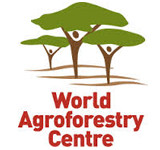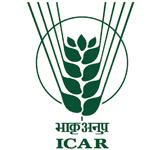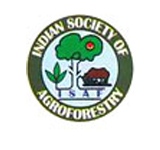
Vigyan Bhavan & Kempinski Ambience
10 - 14 February 2014
Delhi, India
blog

With a rising demand for herbal medicinal and increasing pressure on wild populations, on-farm cultivation makes sense, but are traders willing to source from farms?
A new study published in the scientific journal, Forests Trees and Livelihoods, concludes that formalization of the market in Kenya – through better hygiene, packaging and labelling of materials – has the potential to drive increased cultivation.
Traditional medicine is practised in rural areas throughout the developing world due in part to poor access to modern medicine but also because of traditional beliefs that herbal medicine can manage a range of conditions. In Kenya, the majority of traditional medicines are sold as wild plant parts, but in urban areas, demand for traditional medicines is rising and this is leading to increased formalization of the market, with traditional medicines now found in powders, liquids and creams.
Jonathan Muriuki, lead author of the study and research scientist at the World Agroforestry Centre, believes that as lifestyles improve, consumers demand better quality. “This opens up greater opportunities for trade in medicinal tree products among actors in the value chain, such as collectors, producers, healers, processors, manufacturers and even exporters,” outlines Muriuki.
Muriuki and colleagues set out to learn where medicinal plant traders in Kenya sourced their raw materials and to determine if formalisation of the market could provide more opportunities for cultivation. This has been the case in Amatola, and a number of other urban centres in South Africa, where the availability of markets for medicinal products has stimulated cultivation.
Interviews with 55 herbal medicine enterprises in four major cities in Kenya (Nairobi, Mombasa, Kisumu and Meru) revealed that 49 per cent sourced materials from farms and the demand was rising. However, 69 per cent of traders expressed a preference for materials sourced from the wild mainly because they perceived these would have higher potency because the plants will have grown to full maturity and in rich soils and less interference from human activities such as chemical application.
Those who preferred farm-sourced material said this was because of expected higher quality from good crop husbandry, increasing scarcity in the wild, and for some, a deliberate choice to conserve wild resources.
The study focused on three types of enterprises that were geared towards formal status:
- Herbal clinics which process raw plant parts into concoctions which are dispensed directly to patients. These clinics had an annual growth of 12 per cent and most collected themselves from the wild.
- Final product enterprises which process plant parts into tablets, creams and gels that are distributed to retail outlets. These were the fastest growing enterprise with 35 per cent annual growth in traded volume. They sourced 71 per cent of their material from farms.
- Herbal semi-processing enterprises which process plant parts into powders and liquids that are sold directly to consumers mostly in open air markets. These enterprises grew at 8 per cent and mostly collected themselves from the wild.
“While these types of formal enterprise are fairly recent in Kenya, we found that they are all experiencing annual growth and demanding more uniform raw materials which cultivation can provide,” says Muriuki.
“Cultivation would not only provide a sustainable supply of medicinal products but also increase the incomes of poor smallholder farmers while addressing current problems of over-harvesting and resource degradation which have reduced the abundance of wild materials.”
To further assess the potential for cultivation, 200 farmers in an area east of Mount Kenya, where agroforestry is widely practised, were interviewed. Although many of these farmers sold timber and fruits from their trees, only 5 reported selling medicinal tree products despite having knowledge of the medicinal properties of the trees.
“Farmers stated they would sell medicinal products if they had access to market opportunities,” says Muriuki. “Access to markets for other tree products has led to increased cultivation of these, so it would be fair to assume the same could be applied for medicinal trees”.
Species such as Warburgia ugandensis and Kigelia Africana, which the study found had trade growth rates above 10% and were mainly sourced from the wild, were identified as high priority for domestication in order to increase volumes sourced from farms and conserve wild resources. Other species which are in high demand, such as P. africana, A. indica, and M. oleifera, should also be considered a priority for cultivation according to the authors.
To improve the market in traditional medicines, the study recommends linking traders to farmers in the form of grower groups, especially women, which could initially focus on the most traded species with diminishing supplies.
“We found scope for enabling policies that would encourage the supply of medicinal species from farms, such as tax rebates or more stringent measures to control volumes harvested from the wild,” explains Muriuki. “Such measures would encourage greater cultivation”.
The authors identified areas for further research, including propagation techniques that can produce trees with high chemical concentrations at early maturity and economic analysis into the profitability of planting medicinal species under various management regimes to help farmers make decisions about planting them as alternative crops.





